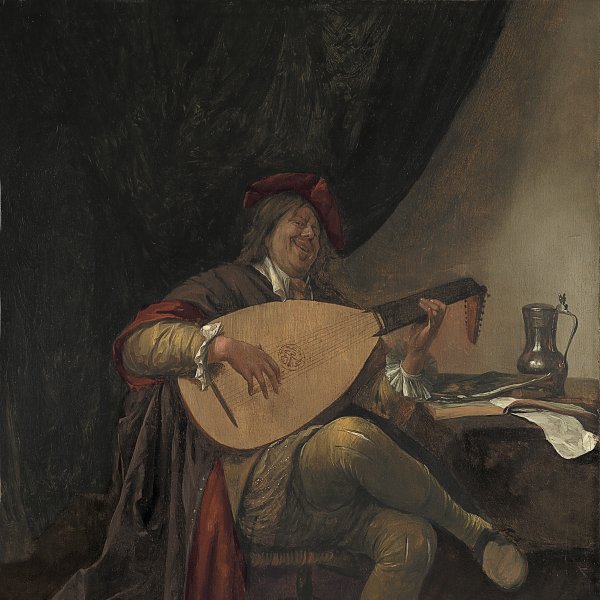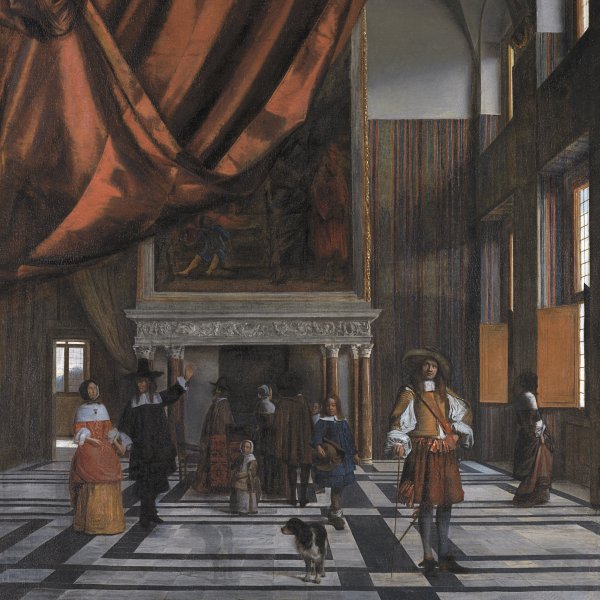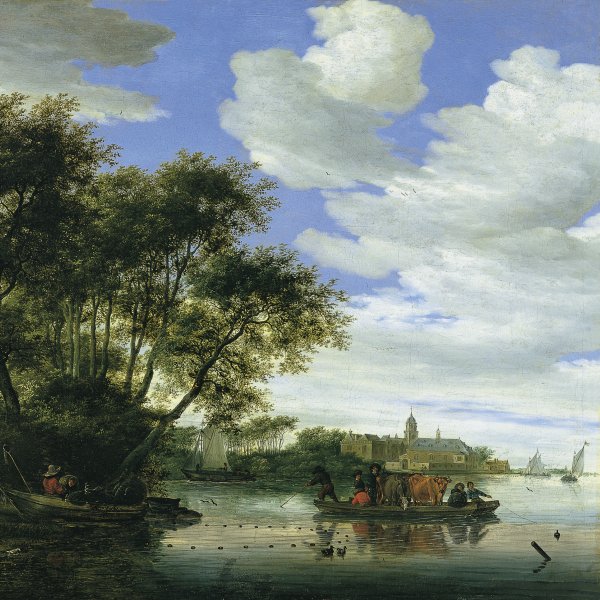Pastoral Scene
1663
Oil on canvas.
48.5 x 62.5 cm
Museo Nacional Thyssen-Bornemisza, Madrid
Inv. no.
417
(1978.56
)
ROOM 26
Level 2
Permanent Collection
Adriaen van de Velde was the son of Willem van de Velde I and the younger brother of Willem van de Velde II. Like other close family members he devoted his activities to view painting although he replaced marine compositions with country scenes. The artist began his studies in the family workshop in Amsterdam and completed his training with the Haarlem painter Jan Wijnants. Adriaen van de Velde painted winter landscapes, beach scenes, biblical subjects and bucolic views in which he revealed his natural abilities at interpreting light and atmosphere. Although he died young aged thirty-five, he was a prolific artist over the course of a career of almost two decades, producing drawings, prints and paintings. Adriaen van de Velde is primarily known and appreciated for his landscapes in which the figures and animals frequently occupy an important position.
The present canvas is signed and dated 1663. At this period Van de Velde principally focused on scenes of the Italian countryside, although there is no documentation to suggest that he visited Italy. Pastoral scenes of this type would be his preferred subject matter during the last ten years of his career. Inspired by the Italianate painters living in Amsterdam in the 1650s, Van de Velde depicted landscapes bathed in an intense southern light in which shepherds and their animals are set within idyllic landscapes of green meadows and clear blue skies.
Pastoral Scene conforms to this type of work and depicts two peasants peacefully resting by a stream, surrounded by cows, sheep and other animals. Van de Velde locates the principal motif in the foreground on the left while he used the right side of the canvas to open up a path that leads to the foot of a mountain and also included a secondary scene with another figure.
As Robinson noted, this canvas and its related drawings allow us to reconstruct the artist’s working methods with regard to the construction of the composition. Van de Velde initially made an overall sketch of the composition. This was followed by a second drawing in which he defined the forms and resolved compositional issues, using this drawing as the basis for a third one in which the composition is presented almost in its final state. Van de Velde also made sketches from life of the locations that he depicted and of animals, which he later worked up in the studio. The Pierpont Morgan Library in New York has one of the preparatory drawings for this canvas in which the figures and animals in the principal scenes and their immediate surroundings are completely defined. The most notable differences between the drawing and the final composition are the landscape background and the passage that terminates the composition on the right. Gaskell referred to the fact that elements in this painting are to be found in other works by the artist, including the group with the cow and the sheep lying in the foreground, which is to be seen in Mercury and Argus in the Liechtenstein Collection in Vaduz.
Mar Borobia
The present canvas is signed and dated 1663. At this period Van de Velde principally focused on scenes of the Italian countryside, although there is no documentation to suggest that he visited Italy. Pastoral scenes of this type would be his preferred subject matter during the last ten years of his career. Inspired by the Italianate painters living in Amsterdam in the 1650s, Van de Velde depicted landscapes bathed in an intense southern light in which shepherds and their animals are set within idyllic landscapes of green meadows and clear blue skies.
Pastoral Scene conforms to this type of work and depicts two peasants peacefully resting by a stream, surrounded by cows, sheep and other animals. Van de Velde locates the principal motif in the foreground on the left while he used the right side of the canvas to open up a path that leads to the foot of a mountain and also included a secondary scene with another figure.
As Robinson noted, this canvas and its related drawings allow us to reconstruct the artist’s working methods with regard to the construction of the composition. Van de Velde initially made an overall sketch of the composition. This was followed by a second drawing in which he defined the forms and resolved compositional issues, using this drawing as the basis for a third one in which the composition is presented almost in its final state. Van de Velde also made sketches from life of the locations that he depicted and of animals, which he later worked up in the studio. The Pierpont Morgan Library in New York has one of the preparatory drawings for this canvas in which the figures and animals in the principal scenes and their immediate surroundings are completely defined. The most notable differences between the drawing and the final composition are the landscape background and the passage that terminates the composition on the right. Gaskell referred to the fact that elements in this painting are to be found in other works by the artist, including the group with the cow and the sheep lying in the foreground, which is to be seen in Mercury and Argus in the Liechtenstein Collection in Vaduz.
Mar Borobia









